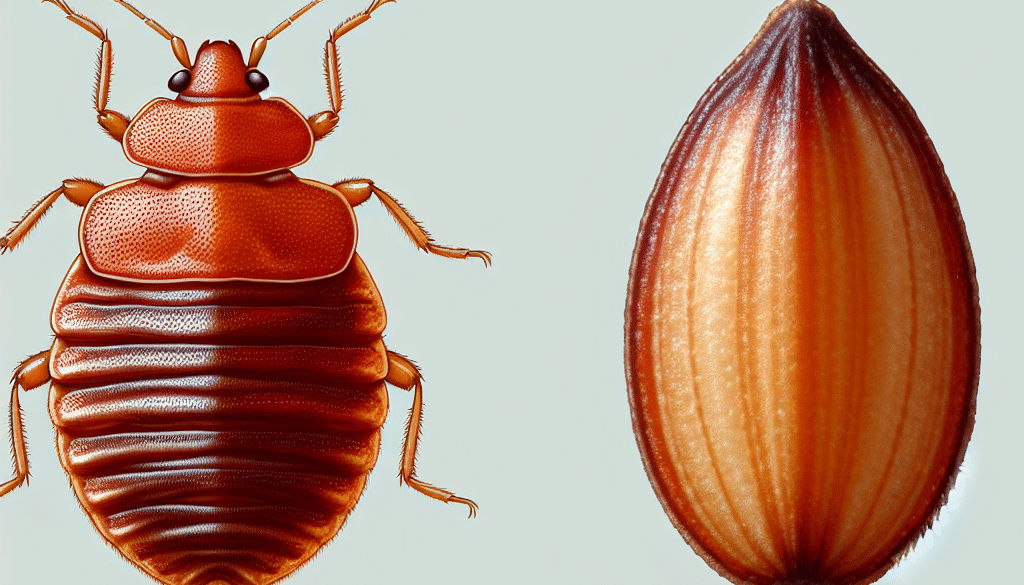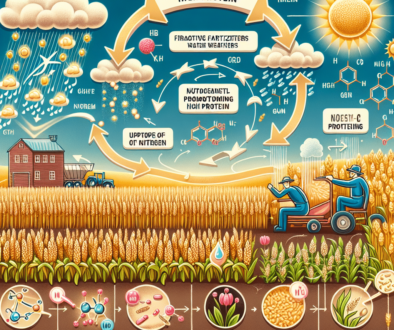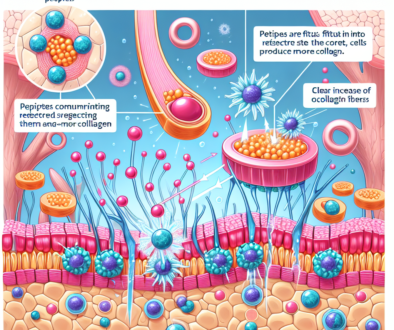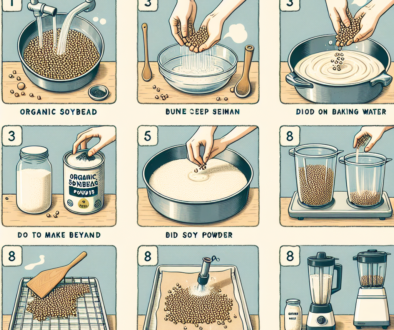Do Bed Bugs Look Like Seeds?
-
Table of Contents
- Bed Bugs vs. Seeds: Understanding the Visual Differences
- What Do Bed Bugs Look Like?
- Comparing Bed Bugs to Seeds
- Identifying Bed Bug Infestations
- Preventing and Controlling Bed Bug Infestations
- Case Studies and Statistics
- Conclusion: The Importance of Accurate Identification
- Explore ETprotein’s Seed-Based Protein Products
Bed Bugs vs. Seeds: Understanding the Visual Differences
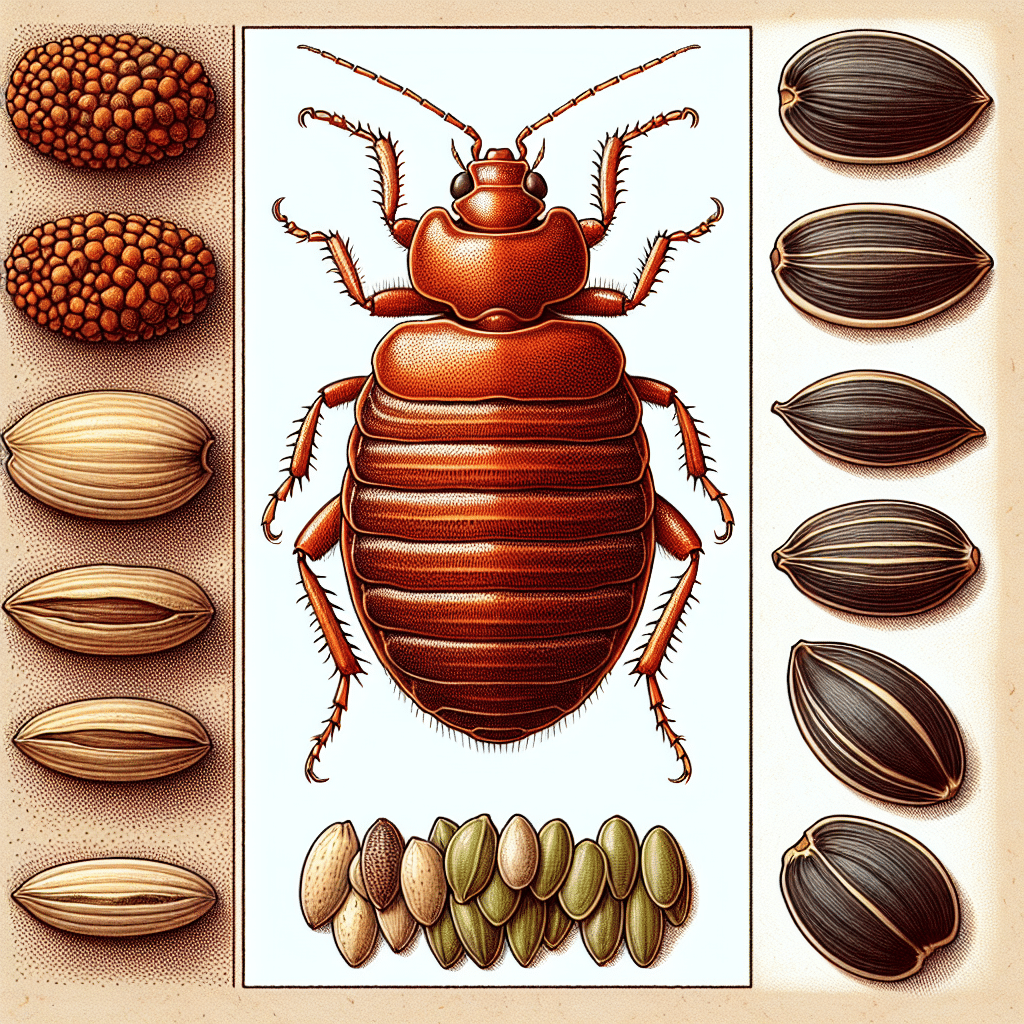
Bed bugs are a common household pest that can cause discomfort and stress to those affected by their presence. One of the challenges in identifying bed bugs is that they are often mistaken for other small objects, such as seeds. This article will explore the similarities and differences between bed bugs and seeds, providing valuable insights to help you accurately identify these pests.
What Do Bed Bugs Look Like?
Bed bugs are small, nocturnal insects that feed on the blood of humans and animals. They are part of the Cimicidae family and are scientifically known as Cimex lectularius. Understanding their appearance is crucial for proper identification.
- Size: Adult bed bugs are typically 4-5 millimeters in length, about the size of an apple seed.
- Shape: They have an oval, flattened body shape when unfed, which becomes more elongated and balloon-like after feeding.
- Color: Unfed bed bugs are a light brown color, but they turn reddish-brown after a blood meal.
- Other Features: Bed bugs have six legs, two antennae, and do not have wings.
Comparing Bed Bugs to Seeds
At first glance, bed bugs can be mistaken for seeds due to their small size and shape. However, there are distinct differences that can help distinguish them from seeds.
- Texture: Seeds typically have a hard, smooth surface, while bed bugs have a softer exoskeleton with a more textured appearance.
- Movement: Bed bugs are living creatures and can move, unlike seeds which are inanimate.
- Color Variation: Seeds come in a variety of colors, whereas bed bugs are more consistent in their coloration, especially after feeding.
- Presence of Legs: Bed bugs have visible legs and antennae, which seeds do not possess.
Identifying Bed Bug Infestations
Recognizing the signs of a bed bug infestation is essential for timely intervention. Here are some indicators:
- Bite Marks: Bed bug bites often appear as small, red, itchy welts on the skin.
- Fecal Spots: Look for small, dark spots on bedding or furniture, which are bed bug excrement.
- Blood Stains: Small blood stains on sheets or pillowcases can be a sign of bed bugs.
- Eggs and Shells: Tiny, pale yellow eggs or eggshells may be found in crevices or cracks near sleeping areas.
- Live Insects: Spotting live bed bugs, especially in mattress seams or box springs, is a clear indication of an infestation.
Preventing and Controlling Bed Bug Infestations
Prevention is key to avoiding bed bug problems. Here are some tips:
- Regular Inspection: Check hotel rooms or second-hand furniture for bed bugs before bringing them into your home.
- Protective Covers: Use mattress and box spring encasements to prevent bed bugs from hiding in your bed.
- Vacuum Regularly: Vacuuming can help remove any bed bugs or eggs from carpets and upholstery.
- Professional Help: If an infestation is suspected, contact a pest control professional for effective treatment.
Case Studies and Statistics
Research has shown that bed bug infestations are on the rise globally. A study by the University of Kentucky found that bed bug incidents in the United States have increased significantly since the early 2000s. Another report by the National Pest Management Association (NPMA) revealed that 1 in 5 Americans has either experienced a bed bug infestation or knows someone who has.
Case studies often highlight the importance of early detection and professional intervention. For example, a multi-unit housing complex in Ohio successfully eradicated a widespread bed bug problem by implementing a comprehensive integrated pest management (IPM) program, which included resident education, regular inspections, and targeted treatments.
Conclusion: The Importance of Accurate Identification
Understanding the differences between bed bugs and seeds is crucial for proper pest identification and management. While they may share some visual similarities, bed bugs are distinguishable by their movement, texture, and the presence of legs and antennae. By being vigilant and taking preventive measures, you can protect your home from these unwelcome invaders.
For those interested in health and nutrition, it’s important to note that while bed bugs are a nuisance, seeds are a valuable source of protein and other nutrients. Companies like ETprotein offer a range of protein products derived from seeds, providing a healthy addition to your diet.
Explore ETprotein’s Seed-Based Protein Products
If you’re looking for high-quality protein sources, consider ETprotein’s range of seed-based protein products. Their offerings include organic rice protein, pea protein, and various seed proteins such as watermelon, pumpkin, and sunflower. These products are non-GMO, allergen-free, and feature a neutral taste, making them an excellent choice for various applications in the food and beverage industry.
ETprotein’s commitment to quality and customer satisfaction makes them a top choice for anyone seeking plant-based protein options. Whether you’re a manufacturer, trader, or distributor, ETprotein can meet your protein needs with their extensive product range.
About ETprotein:
ETprotein, a reputable protein and L-(+)-Ergothioneine (EGT) Chinese factory manufacturer and supplier, is renowned for producing, stocking, exporting, and delivering the highest quality organic bulk vegan proteins and L-(+)-Ergothioneine. They include Organic rice protein, clear rice protein, pea protein, clear pea protein, watermelon seed protein, pumpkin seed protein, sunflower seed protein, mung bean protein, peanut protein, and L-(+)-Ergothioneine EGT Pharmaceutical grade, L-(+)-Ergothioneine EGT food grade, L-(+)-Ergothioneine EGT cosmetic grade, L-(+)-Ergothioneine EGT reference grade and L-(+)-Ergothioneine EGT standard. Their offerings, characterized by a neutral taste, non-GMO, allergen-free attributes, with L-(+)-Ergothioneine purity over 98%, 99%, cater to a diverse range of industries. They serve nutraceutical, pharmaceutical, cosmeceutical, veterinary, as well as food and beverage finished product distributors, traders, and manufacturers across Europe, USA, Canada, Australia, Thailand, Japan, Korea, Brazil, and Chile, among others.
ETprotein specialization includes exporting and delivering tailor-made protein powder and finished nutritional supplements. Their extensive product range covers sectors like Food and Beverage, Sports Nutrition, Weight Management, Dietary Supplements, Health and Wellness Products, and Infant Formula, ensuring comprehensive solutions to meet all your protein needs.
As a trusted company by leading global food and beverage brands and Fortune 500 companies, ETprotein reinforces China’s reputation in the global arena. For more information or to sample their products, please contact them and email sales(at)ETprotein.com today.

